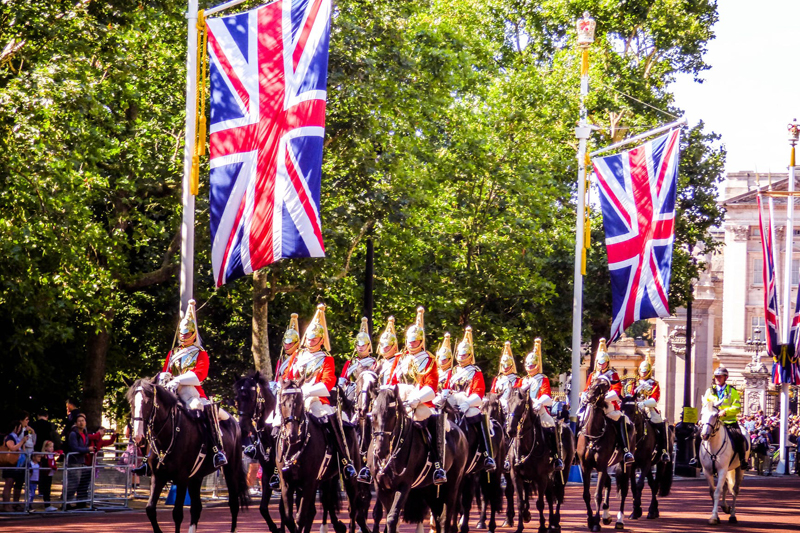English Cathedrals

The word cathedral comes from the Latin word cathedra, meaning seat of the bishop. England’s cathedrals have survived the ravages of history – the greatest and widest spread being Henry VIII’s dissolution of the monasteries - to become the huge tourist attractions they are today. Many English cathedrals are entwined with the history of the land – St Paul’s Cathedral which Sir Christopher Wren redesigned and rebuilt after the great fire of London in 1666; Hereford Cathedral which houses the Mappa Mundi – a map of the world created around 1300; Canterbury Cathedral where Thomas à Becket was murdered in 1170...
Canterbury Cathedral. Seat of the Archbishop of Canterbury – over 100 men have held this office since the first Archbishop, Augustine. The cathedral was rebuilt in 1070 following a fire and has been updated and renovated over the centuries. Chaucer’s Canterbury Tales tell of pilgrims on their way to Canterbury to visit Thomas à Becket’s shrine.
Ely Cathedral. Built on the ground of the shrine and monastery of Ethelreda, a virtuous seventh century Saxon queen, Ely church became a cathedral in the twelfth century. The cathedral’s crowning glory is the lantern – the ceiling of the Octagon tower made of glass, lead and wood. The cathedral towers over the landscape around, which at one time was mainly fens with people navigating the surrounding countryside by boat – it is sometimes called the ship of the Fens.
Lincoln Cathedral. Another cathedral that dominates a flat landscape, thus visible from miles around. A gothic building, rich in architectural detail with a huge central tower, Lincoln cathedral was believed to the tallest building in the world until 1549 when the spire of the tower fell down. Lincoln cathedral owns one of the four remaining copies of King John’s Magna Carta – a document devised to curtail the powers of the king.
Salisbury Cathedral. Another cathedral that has a copy of the Magna Carta – the two other copies are owned by the British Library. Ken Follett’s The Pillars of the Earth tells of a fictional cathedral’s construction which has many similarities to Salisbury. William Golding’s book The Spire gives a fictional account – rich yet dark - of the building of Salisbury cathedral’s spire.
York Minster. Seat of the Archbishop of York, second in command to the Archbishop of Canterbury, York Minster is a huge, richly decorated gothic building. Churches rose and fell on the site for centuries before the current structure was conceived by Walter de Gray in the thirteenth century; it was over 250 years before the structure was declared complete. York Minster has some glorious stained glass, some dating back to medieval times; jewels in the glass crown include the Five Sisters Window, the Great East Window and the Rose Window.




Canterbury Cathedral. Seat of the Archbishop of Canterbury – over 100 men have held this office since the first Archbishop, Augustine. The cathedral was rebuilt in 1070 following a fire and has been updated and renovated over the centuries. Chaucer’s Canterbury Tales tell of pilgrims on their way to Canterbury to visit Thomas à Becket’s shrine.
Ely Cathedral. Built on the ground of the shrine and monastery of Ethelreda, a virtuous seventh century Saxon queen, Ely church became a cathedral in the twelfth century. The cathedral’s crowning glory is the lantern – the ceiling of the Octagon tower made of glass, lead and wood. The cathedral towers over the landscape around, which at one time was mainly fens with people navigating the surrounding countryside by boat – it is sometimes called the ship of the Fens.
Lincoln Cathedral. Another cathedral that dominates a flat landscape, thus visible from miles around. A gothic building, rich in architectural detail with a huge central tower, Lincoln cathedral was believed to the tallest building in the world until 1549 when the spire of the tower fell down. Lincoln cathedral owns one of the four remaining copies of King John’s Magna Carta – a document devised to curtail the powers of the king.
Salisbury Cathedral. Another cathedral that has a copy of the Magna Carta – the two other copies are owned by the British Library. Ken Follett’s The Pillars of the Earth tells of a fictional cathedral’s construction which has many similarities to Salisbury. William Golding’s book The Spire gives a fictional account – rich yet dark - of the building of Salisbury cathedral’s spire.
York Minster. Seat of the Archbishop of York, second in command to the Archbishop of Canterbury, York Minster is a huge, richly decorated gothic building. Churches rose and fell on the site for centuries before the current structure was conceived by Walter de Gray in the thirteenth century; it was over 250 years before the structure was declared complete. York Minster has some glorious stained glass, some dating back to medieval times; jewels in the glass crown include the Five Sisters Window, the Great East Window and the Rose Window.


You Should Also Read:
Murder In The Cathedral
English Queens - Boudicca to Elizabeth I
William Tyndale

Related Articles
Editor's Picks Articles
Top Ten Articles
Previous Features
Site Map
Content copyright © 2023 by Asha Sahni. All rights reserved.
This content was written by Asha Sahni. If you wish to use this content in any manner, you need written permission. Contact Sarah V Monaghan for details.


